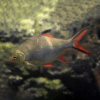To provide the best experiences, we use technologies like cookies to store and/or access device information. Consenting to these technologies will allow us to process data such as browsing behaviour or unique IDs on this site. Not consenting or withdrawing consent, may adversely affect certain features and functions.
The technical storage or access is strictly necessary for the legitimate purpose of enabling the use of a specific service explicitly requested by the subscriber or user, or for the sole purpose of carrying out the transmission of a communication over an electronic communications network.
The technical storage or access is necessary for the legitimate purpose of storing preferences that are not requested by the subscriber or user.
The technical storage or access that is used exclusively for statistical purposes.
The technical storage or access that is used exclusively for anonymous statistical purposes. Without a subpoena, voluntary compliance on the part of your Internet Service Provider, or additional records from a third party, information stored or retrieved for this purpose alone cannot usually be used to identify you.
The technical storage or access is required to create user profiles to send advertising, or to track the user on a website or across several websites for similar marketing purposes.
Red Devil Vampire Crab - Geosesarma Hagen - Decapod Crustacean 4 × £8.71


 Red Devil Vampire Crab - Geosesarma Hagen - Decapod Crustacean
Red Devil Vampire Crab - Geosesarma Hagen - Decapod Crustacean 











Emily Carter (verified owner) –
I recently added 5 Long Fin Cherry Barbs to my community tank, and I couldn’t be happier! These little guys have transformed my aquarium into a dynamic and colorful paradise. After about two weeks, they settled in beautifully, showcasing their stunning fins and vibrant colors. I love how they interact with each other, darting around the tank and displaying their playful behavior. Compared to other tropical fish I’ve kept, these barbs are so active and engaging, making them a joy to watch.
They seem to thrive in a well-planted environment, so I recommend adding some live plants for them to explore. Just be careful with water parameters; they prefer slightly acidic to neutral pH. My only minor concern was that they can be a bit skittish at first, but with some patience, they quickly became accustomed to their surroundings. If you’re a caring fish parent looking for lively and peaceful freshwater fish, these Long Fin Cherry Barbs are a fantastic choice! I would definitely purchase them again, and they’ve made my aquarium a much happier place.
Emily Carter (verified owner) –
I recently added 5 Long Fin Cherry Barbs to my aquarium, and I couldn’t be happier with my purchase! These little guys are such a delight, darting around the tank with their vibrant colors and elegant fins. After just two weeks, they’ve settled in beautifully and are thriving in my planted community tank alongside tetras and guppies. I appreciate that they’re easy-care tropical fish that don’t require overly complicated setups, which makes them perfect for both beginners and seasoned fish keepers alike. I’ve noticed that they enjoy foraging among the plants, and their playful nature brings so much life to the aquarium. Compared to other barbs I’ve kept in the past, the Long Fin Cherry Barbs are far less aggressive, which is great for maintaining harmony in a community environment. The only minor issue I faced was a bit of initial shyness, but that quickly faded as they became more comfortable in their new home. If you’re looking for a peaceful and captivating species to brighten your tank, I highly recommend these cherry barbs! They truly are amazing fish for any freshwater aquarium.